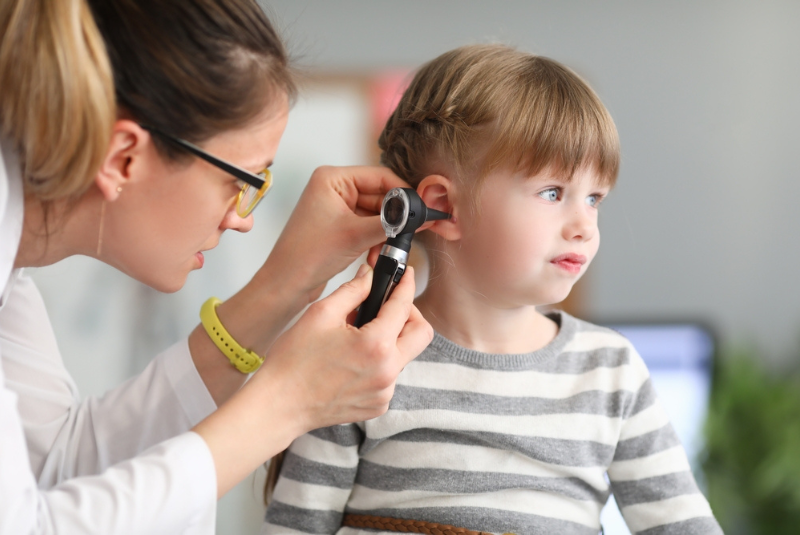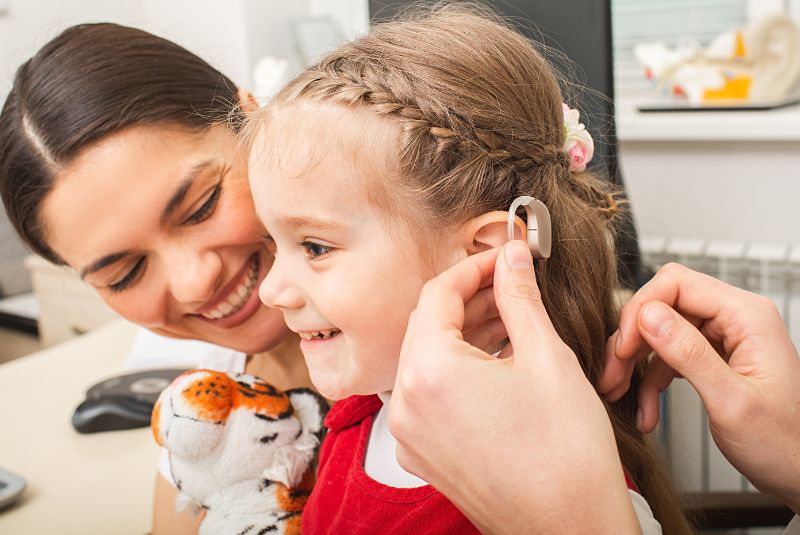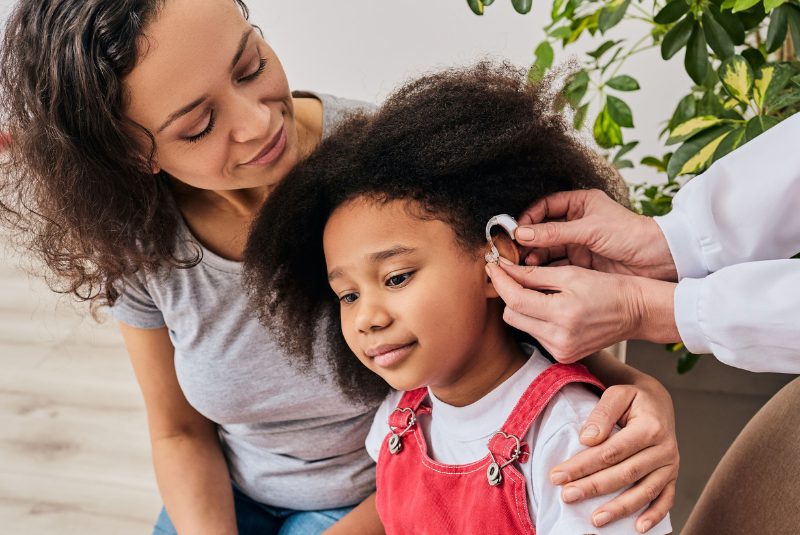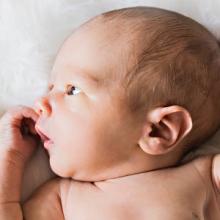Hearing loss
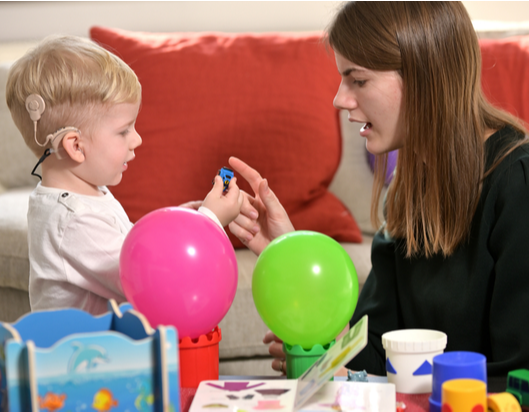
Childhood hearing loss ranges from mild to profound. Children with mild hearing loss may have trouble hearing quiet talking while children with profound hearing loss may not have any hearing.
A baby or child might be diagnosed with hearing loss if they can’t hear sounds below a certain volume. Hearing loss can be present at birth, which is called a congenital loss or can happen later in childhood.
More than half of children with congenital hearing loss affecting both ears have a genetic cause that may or may not run in families. Some children with hearing loss may have an abnormality in their inner ear or hearing nerve. Sometimes, hearing loss can be caused by a virus during pregnancy, called cytomegalovirus (CMV). Many people carry the CMV virus without symptoms.
Babies and young children need to hear to learn to speak. Hearing loss can make it hard to learn to communicate and make friends. Many deaf and hard-of-hearing children communicate through signing.
Early diagnosis of hearing loss means children may be able to access appropriate interventions to help their communication and social connections.

Who does it affect?
Who does it affect?
- About 600 Australian infants are diagnosed each year with congenital hearing loss within weeks of birth. Up to 13 per cent of school-aged children have a degree of hearing loss.
- CMV is the only potentially preventable cause of hearing loss in children. It causes childhood hearing problems in around one in five children with moderate to profound hearing loss in both ears.
- Just over half of hearing device fittings in Australia are for mild hearing loss in children aged under two.
Our hearing loss research
Our hearing loss research
- The Victorian Childhood Hearing Longitudinal Databank (VicCHILD) which is a partnership between The Royal Children’s Hospital and Murdoch Children’s Research Institute. This research database has collected information on children with permanent hearing loss since 2012. When they turn two, five and 10 we assess each child’s learning, development and language.
- Mild Matters, a research project which aims to uncover the best ways to manage and help babies and young children with mild permanent hearing loss in both ears. We know hearing aids can help babies with moderate to severe hearing loss, but we do not know whether they help babies with mild hearing loss.
- We are working with the Gen V research project, one of the world's largest birth and parent studies, to determine how common congenital CMV is in Victorian newborns. This will allow us to understand the long-term outcomes for babies with congenital CMV who don’t show hearing loss symptoms at birth. Results should help determine whether universal newborn CMV screening is warranted and support the development of a same-day test for timely diagnosis and management.
Impacts of our research

Impacts of our research
- Our hearing loss studies contributed to and chaired the development of Australia’s first national guidelines to improve the medical management of deaf and hard-of-hearing children. The guidelines have been translated into a national parent and clinician resource.
- More than 1,000 children are taking part in the VicCHILD register, the world’s largest hearing databank of its kind. Researchers worldwide can use it to answer questions including why some deaf and hard-of-hearing children do well while others experience greater difficulties. We hope findings will lead to a better understanding of causes and outcomes, improve intervention and treatment for children with permanent hearing loss and identify early genetic and environmental factors that predict a child’s future.
- Through our Mild Matters study, we will guide hearing health professionals in managing children with mild hearing loss.
- Our study testing if saliva swabs can identify congenital cytomegalovirus in newborns who fail routine hearing tests found the saliva test is feasible and well-received, even when the saliva swab is taken by parents themselves. This could pave the way for it to be added to infant hearing screening programs nationwide. If detected within three weeks of birth, anti-viral treatment may be considered and in the future, preventive medicine may be possible.
Our vision
Our vision
Our goal is to improve the lives of deaf and hard-of-hearing children and their families through earlier detection, intervention and treatment. This will lead to improved hearing, communication, social connections, learning and development and create better opportunities in life. Other goals include prevention and cure.

